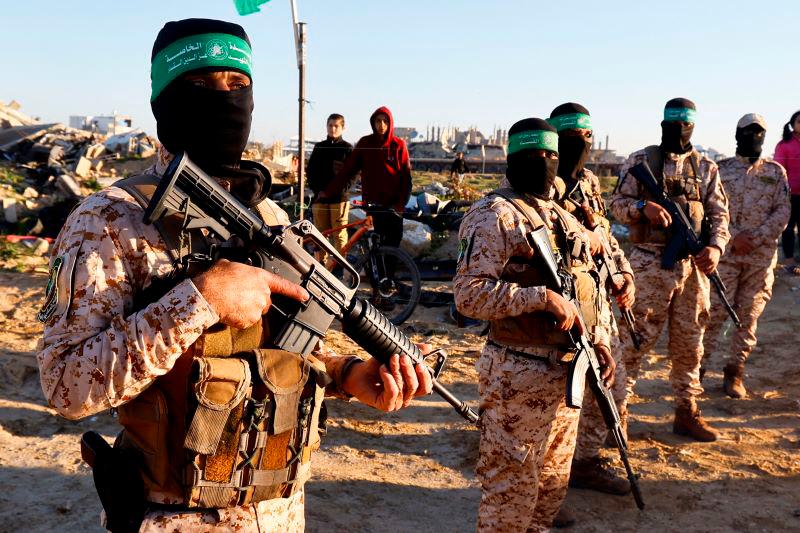CAIRO/JERUSALEM: Israeli hostages Iair Horn, Sagui Dekel-Chen and Sasha Troufanov are expected to return from Gaza on Saturday after Egyptian and Qatari mediators helped avert a standoff that threatened to sink a fragile ceasefire.
Palestinian militant group Hamas said the three would be returned in exchange for 369 Palestinian prisoners and detainees, easing fears that the agreement could collapse before the end of a 42-day ceasefire.
Dekel-Chen, a U.S.-Israeli, Troufanov, a Russian Israeli, and Horn, whose brother Eitan was also abducted, were seized in Kibbutz Nir Oz, one of the communities around the Gaza Strip that was overrun by Hamas gunmen on October 7, 2023.
Dozens of armed militants were deployed at the site of the release in Khan Younis in southern Gaza. The three will be handed over to the International Committee of the Red Cross which will then transport them to Israeli forces.
Hamas had earlier threatened not to release more hostages after it accused Israel of violating the terms of the ceasefire by blocking aid from entering Gaza, drawing counterthreats of a resumption of fighting from Israel, which called up reservists and placed its forces on high alert.
ALSO READ: Israeli security official says military readying to withdraw from Lebanon
The emaciated appearance of three hostages released last week and accounts of abuse by other hostages released since January 19 when the ceasefire took effect has set off Israeli protests demanding that the government stick to the ceasefire and proceed with the next stage of the deal to bring all the hostages home.
In an apparent effort to head off some of the criticism of hostage mistreatment, Islamic Jihad, the militant group that is allied with Hamas and is holding Troufanov, released a video of him on Friday, showing him eating and fishing at the Gaza beach.
Prospects for the ceasefire surviving have also been clouded by U.S. President Donald Trump's call for Palestinians to be moved permanently out of Gaza, and for the enclave to be turned over to the United States to be redeveloped. That call was strongly rejected by Palestinian groups, Arab states and Western allies.
Hamas agreed last month to hand over 33 Israeli hostages, including women, children and sick, wounded and older men, in return for hundreds of Palestinian prisoners and detainees, during a six-week truce during which Israeli forces would pull back from some of their positions in Gaza.
Before Saturday, 16 of the 33 Israeli hostages had been returned, along with five Thais who were handed over in an unscheduled release. That left 76 hostages still in Gaza, only around half of whom are thought to be alive.
GAZA LARGELY IN RUINS
The truce was intended to open the way for a second phase of negotiations to return remaining hostages and complete the withdrawal of Israeli forces before a final end to the war and the rebuilding of Gaza, which now lies largely in ruins, facing shortages of food, running water and electricity.
The Hamas threat to hold off from releasing more hostages followed its accusation that Israel had blocked tents and temporary shelter materials from entering into Gaza, leaving tens of thousands exposed to the winter cold.
Israel rejected the accusation, saying it had allowed thousands of aid trucks in, and accusing Hamas in its turn of reneging on the agreement. Hamas on Saturday said it expects Israel to meet its aid obligations for the ceasefire to stay on track.
ALSO READ: Hamas says it is willing to move ahead with Gaza ceasefire
International aid groups say that more truckloads of aid have been entering Gaza since the start of the ceasefire but aid officials say the amounts are insufficient to meet the needs of the population.
Israel invaded the coastal enclave after the Hamas-led attack on communities in Israel on October 7, 2023, killing about 1,200 people, according to Israeli tallies, and taking 251 as hostages.
The Israeli military campaign that followed has killed more than 48,000 Palestinians in Gaza, according to Palestinian health ministry figures, destroyed many of its buildings and left most of the population homeless.









